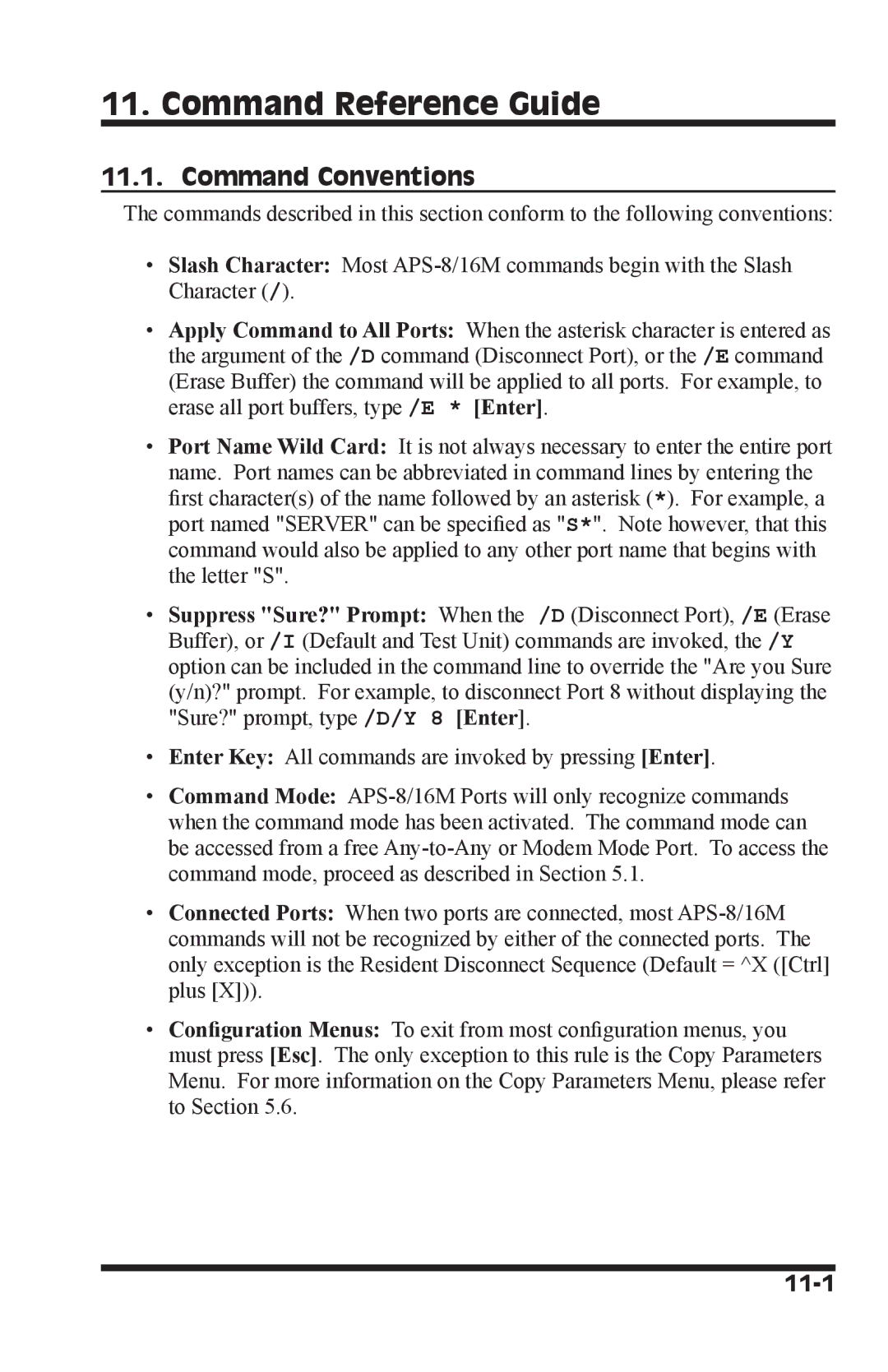
11. Command Reference Guide
11.1. Command Conventions
The commands described in this section conform to the following conventions:
•Slash Character: Most
•Apply Command to All Ports: When the asterisk character is entered as the argument of the /D command (Disconnect Port), or the /E command (Erase Buffer) the command will be applied to all ports. For example, to erase all port buffers, type /E * [Enter].
•Port Name Wild Card: It is not always necessary to enter the entire port name. Port names can be abbreviated in command lines by entering the first character(s) of the name followed by an asterisk (*). For example, a port named "SERVER" can be specified as "S*". Note however, that this command would also be applied to any other port name that begins with the letter "S".
•Suppress "Sure?" Prompt: When the /D (Disconnect Port), /E (Erase Buffer), or /I (Default and Test Unit) commands are invoked, the /Y option can be included in the command line to override the "Are you Sure (y/n)?" prompt. For example, to disconnect Port 8 without displaying the "Sure?" prompt, type /D/Y 8 [Enter].
•Enter Key: All commands are invoked by pressing [Enter].
•Command Mode:
•Connected Ports: When two ports are connected, most
•Configuration Menus: To exit from most configuration menus, you must press [Esc]. The only exception to this rule is the Copy Parameters Menu. For more information on the Copy Parameters Menu, please refer to Section 5.6.
